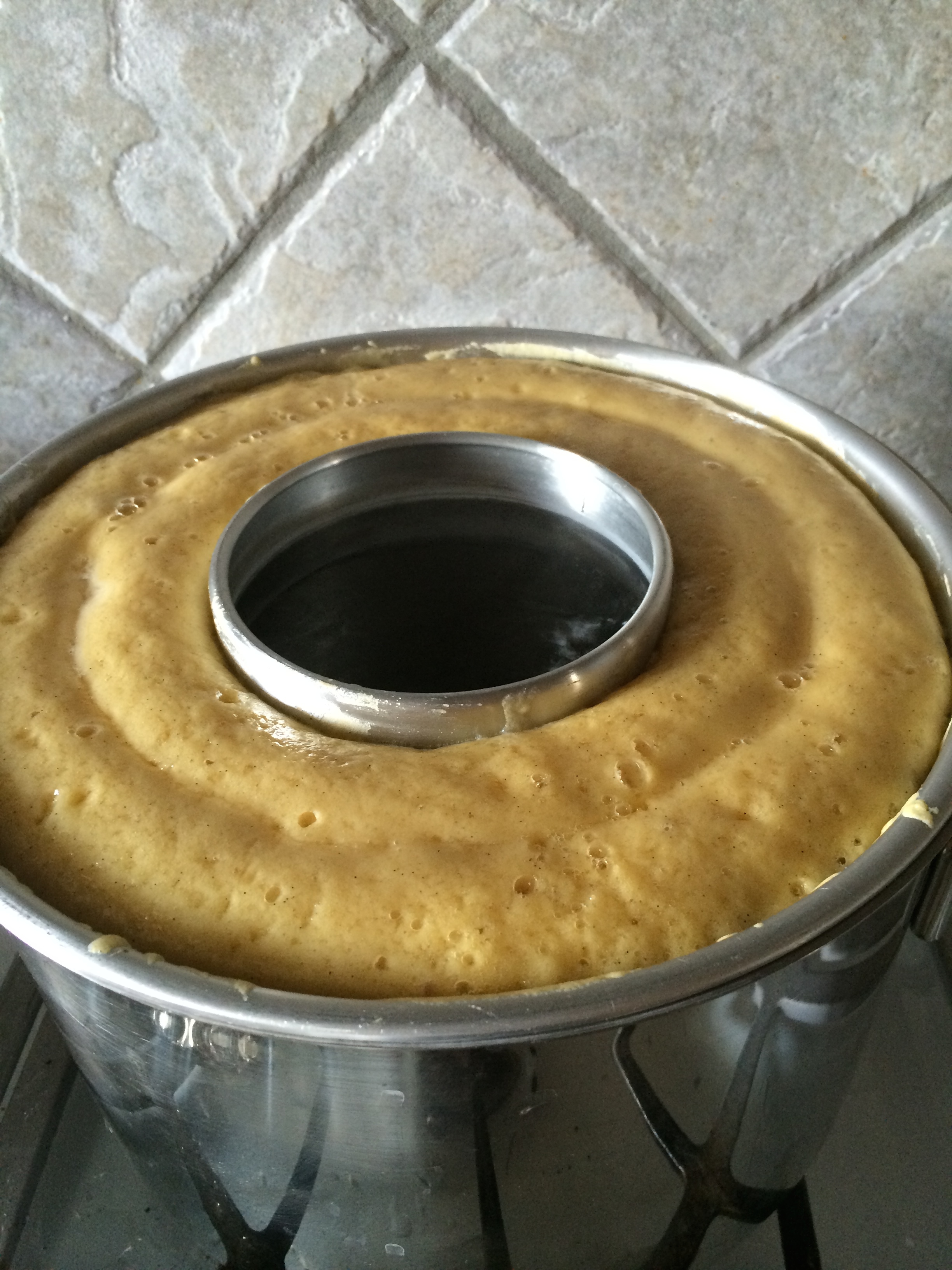Sports Cake - Sportskage
Sports cake, it's a contradicting name. There is nothing sporty about this cake, there's a lot of whipped cream, and you need to go to the gym after eating a piece of this.
The sports cake is a classic cake made by the Danish "Conditori La Glace." La Glace first made this cake for the premiere of the political play "Sports Men" in november 1891. And this is why it's called Sports cake.
The cake is a kind of layer cake, with a thin macaroon bottom with a filling of whipped cream mixed with crushed praline (hazelnut and hard caramel) and topped of with whipped cream and caramelized cream puffs. Even though it’s just whipped cream on whipped cream, it's really yummy and not overly sweet. So if you ever find you self in Copenhagen, Denmark, you have to visit La Glace, It's a little slice of old-school Denmark at its best.
It might be a huge feat to take on La Glace, but I'm making it for one of my Danish friends birthday, and when we both live in California, I can't just order a cake for her.
The recipe is kinda secret, but La Glace publish it in a pamphlet, when the cake turned 100 years in 1991. And a popular Danish food program showed their version on TV a few years ago.
Here is my version inspired by "Spise med Price."
Makes 1 cake.
Ingredients:
Cake:
- 250 g marzipan (almond paste)
- 370 g sugar
- 3 egg whites
Praline:
- 100 g hazelnuts
- 300 g sugar
Cream puffs:
- 100 g butter, salted
- 200 ml water
- 125 g all-purpose flour
- a pinch salt
- 1 pinch baking powder
- 3 large eggs
Caramel for dipping the cream puffs:
- sugar
Filling & frosting:
- 1½ liters heavy whipping cream (use an organic with only cream in it like Clover)
Directions:
Cake:
Preheat the oven to 350℉ (175℃)
Mix marzipan, sugar and egg whites, and spread the dough onto a 9 inch circle on a parchment paper or in a 9 inch springform pan, well greased. Bake it for about 30 minutes.
Praline:
Roast the hazelnuts on a dry skillet, until golden brown and most of the skin loosens. Rub the skin of the nuts between some kitchen towels.
Melt the sugar in a large skillet, and add the hazelnuts, when it's golden brown. Stir until the nuts are covered in caramel. Pour the mixture onto a parchment lined baking sheet to cool.
Cream puffs:
Preheat the oven to 400℉ (200℃).
Put water and butter in a medium saucepan and bring it to a boil over medium heat. In a bowl sift flour, baking powder and salt. When the butter is all melted add all the flour at once, and stir the mixture with a wooden spoon. Lower the heat and keep stirring until a dough is formed and it pulls away from the sides of the pan and is slightly shiny.
Keep beating the dough with the wooden spoon until slightly cooled, about 2 minutes.
Beat all the eggs in a bowl. Add a little of the beaten eggs, incorporating it thoroughly before adding more. Add the egg in small amounts until you have a thick paste but not runny at all.
Line 2 baking sheets with parchment paper.
Fill a large pastry bag fitted with an open tip, with the cream puff dough. Pipe quarter-size circular mounds about 2 inches apart, onto the parchment paper. To get the best tops on the cream puffs stop pressing on the pastry bag before you lift it, make a small circular move with your wrist as you lift the tip of the puff. If you have small tips on the puffs anyway, dab the tops of each puff with a fingertip dipped in water to smoothen the tops.
Caramelized puffs.
Bake the puffs for 15-18 minutes, until they are puffed up and golden brown.
DO NOT open the oven while baking cream puffs, it will cause them to deflate.
Let the puffs cool on a wire rack.
When cooled, melt sugar in a small saucepan, till you have a light brown caramel. Dip the puffs in the melted sugar, and let them dry on a parchment paper lined baking sheet. Be careful, the sugar is very very hot.
Filling:
The dome made, started piping.
Chop up the praline, you can use a food processor, but you don't want it to turn into a flour. You need some crunchy parts in the filling.
Whip 1 liter whipping cream, until it can hold a peak. Mix in the praline.
Whip the rest of the cream, a little softer than the other cream, this is used for piping.
Put the cake on a cake stand, and put the praline filled cream onto it like a dome.
Pipe the regular whipped cream to cover the cake part, using a small open tip. Place the cream puffs on the dome. Pipe small petals round the puffs, so the hole dome is covered.
NOTE: You can make the cake and praline in advance, maybe the day before.







